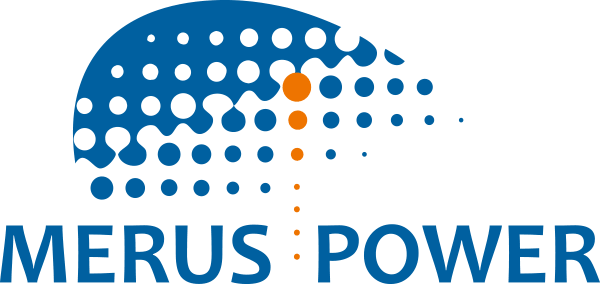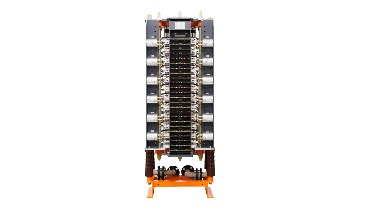Key functions:
- Voltage variation control
- Flicker mitigation
- Dynamic reactive power control
- Power factor improvement
- Harmonic current mitigation
- Load balancing


Merus Static Synchronous Compensators (STATCOMs) are part of the Merus FACTS product family and built on modern IGBT power electronics technology. Merus STATCOMs are designed to provide real-time reactive power compensation and active harmonic filtering in demanding applications. Merus STATCOMs minimize voltage variations and mitigate flicker caused by heavy industrial loads, such as electric arc furnaces (EAFs), mine winders, harbor cranes, excavators, etc.
In wind and solar farms, Merus STATCOMs enable grid code compliance. Transmission and distribution utilities benefit from Merus STATCOMs in the form of improved transmission and distribution capacity. Merus Power provides STATCOM solutions up to 38.5kV levels. Merus Power can supply a complete turnkey solution.
Merus Static Var Compensator (SVC) can be flexibly used in reactive power compensation and passive harmonic filtering applications. Merus SVC can be connected to voltage levels from 3.3 kV all the way up to 38.5 kV. The reactive power compensation range varies from 4 MVAr to 250 MVAr.
Innovative design and reliability
At the heart of SVC is Merus thyristor valve, used in TCRs and TSCs for dynamic control of reactive power. Merus thyristor valve was developed to meet the highest requirements for compactness, performance and reliability in harsh industrial environments. Thanks to the state-of-the-art composite construction, the valve is compact enough to be installed even into a standard sea freight container, enabling relocatable SVC designs.
The SVC system can be built for all medium voltage levels starting from 3.3 kV all the way up to 38.5 kV. Power output ranges from 4 MVAr to 250 MVAr. The devices can be connected in parallel for a higher total output and added redundancy. Each SVC system is tailor-made to fit the network fault level and load parameters.
Open- and closed-loop control strategies permit effective flicker mitigation, reactive power control, power factor control and harmonic mitigation. The thyristor valves in the SVC are equipped with Merus Control & Protection System that utilizes proven control algorithms.
SVC can be monitored and controlled remotely or at on-site workstations with the advanced and easy user interface with a 19” touch screen. Fiber optic communications enable long-distance signal transfer.
Voltage can be controlled by controlling the reactive power flowing in the system. The reactive power can be consumed with inductive reactance (reactors) and produced with capacitive reactance (capacitors). SVC can be understood as adjustable impedance that provides reactive power proportionally to the system supply voltage. SVC impedance can be modified by combining adequate amounts of inductive and capacitive reactance. Inductance is provided by thyristor controlled reactors (TCR) using Merus thyristor valves, while the capacitive part consists of fixed capacitor banks.
When the inductive part is operating at maximum current, the SVC’s output reactive power is zero or inductive, drawing the voltage of the connection point down. When inductive part current is zero, the SVC system, with its maximum capacitive power, pulls the voltage of the connection point up. The capacitor banks also work as passive harmonic filters, fine-tuned to reduce harmonics generated by the thyristors of TCR and by the loads. With the line-commutated thyristors the reaction time of SVC is typically half a network cycle.
Merus SVC solutions are always tailored to meet the specific needs of each customers. Here are some of the example specifications of Merus SVC solutions
